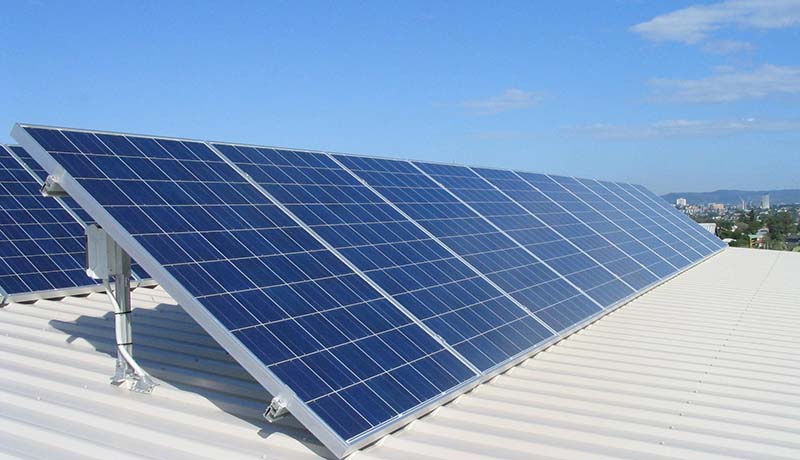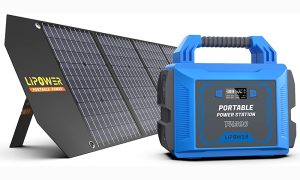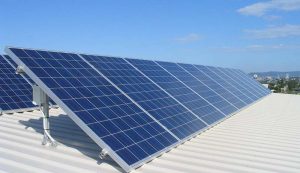
Monocrystalline Vs Amorphous Solar Panels: Which is Better?
Solar panels are devices that convert sunlight into electricity. They are an essential part of renewable energy systems and are used in a variety of applications, including powering homes and businesses, charging electric vehicles, and providing electricity to remote locations.
Solar panels work by using photovoltaic (PV) cells to convert sunlight into direct current (DC) electricity. The PV cells are made of semiconductor materials, such as silicon, that absorb photons of light and release electrons. The movement of these electrons generates an electric current, which can be captured and used to power devices or fed back into the electric grid.
The use of solar panels has become increasingly important as the world looks for ways to reduce its reliance on fossil fuels and combat climate change. Solar energy is a clean, renewable, and widely available source of electricity, and the use of solar panels can help to reduce greenhouse gas emissions and improve air quality.
Types of Solar Panels
There are several types of solar panels available on the market, each with its own unique characteristics. The two main categories of solar panels are monocrystalline and amorphous.
Monocrystalline Solar Panels
Monocrystalline solar panels are made from a single, continuous crystal of silicon. They are characterized by their black or blue color and their uniform appearance.
Monocrystalline solar panels are known for their high efficiency, which means that they are able to convert a large portion of the sunlight that hits them into electricity. They also have a long lifespan, with some panels lasting more than 25 years. In addition, monocrystalline solar panels have an attractive appearance and can be a stylish addition to a home or business.
Some of the main advantages of monocrystalline solar panels include:
- High efficiency: Monocrystalline solar panels have a high efficiency rate, meaning that they are able to convert a large portion of the sunlight that hits them into electricity.
- Long lifespan: Monocrystalline solar panels have a long lifespan and can last for more than 25 years with proper maintenance.
- Attractive appearance: Monocrystalline solar panels have a sleek, uniform appearance and can be a stylish addition to a home or business.
Amorphous Solar Panels
Amorphous solar panels, also known as thin-film solar panels, are made from a thin layer of photovoltaic material that is deposited on a substrate, such as glass or plastic. They are characterized by their dark color and their flexibility or lightweight design.
Amorphous solar panels have a lower efficiency rate compared to monocrystalline solar panels, but they have some unique advantages. They can be manufactured using low-cost methods, making them an affordable option for certain applications. They can also be flexible, allowing them to be installed on curved or irregular surfaces, and they are not as sensitive to heat, which means that they can be used in a wider range of temperatures.
Some of the main advantages of amorphous solar panels include:
- Can be flexible or lightweight: Amorphous solar panels can be made in a flexible or lightweight design, which makes them suitable for certain applications.
- Can be used in a wider range of temperatures: Amorphous solar panels are not as sensitive to heat as monocrystalline solar panels, which means that they can be used in a wider range of temperatures.
- Can be manufactured using low-cost methods: Amorphous solar panels can be manufactured using low-cost methods, making them more lower.
Comparison of Monocrystalline and Amorphous Solar Panels
When deciding between monocrystalline and amorphous solar panels, it is important to consider several factors, including efficiency, lifespan, cost, appearance, and suitability for different applications.
Efficiency
Monocrystalline solar panels have a higher efficiency rate compared to amorphous solar panels, which means that they are able to convert a larger portion of the sunlight that hits them into electricity. This can be an important factor for applications where space is limited, as monocrystalline solar panels can generate more electricity in a smaller area. However, amorphous solar panels can still be a viable option for certain applications, such as large-scale installations or applications where the space is not an issue.
Lifespan
Monocrystalline solar panels have a longer lifespan compared to amorphous solar panels, with some panels lasting more than 25 years. Amorphous solar panels generally have a shorter lifespan and may need to be replaced more frequently. This can be an important factor to consider when deciding between the two types of panels, especially for applications where maintenance is difficult or costly.
Cost
Monocrystalline solar panels generally have a higher upfront cost compared to amorphous solar panels. However, the long lifespan of monocrystalline solar panels means that they can often be a more cost-effective option in the long run. Amorphous solar panels have a lower upfront cost but may need to be replaced more frequently, which can increase the overall cost of the system.
Appearance
Monocrystalline solar panels have a sleek, uniform appearance, while amorphous solar panels have a more industrial look. The appearance of the solar panels can be an important factor to consider when deciding which type to use, as the panels will be visible on the roof or in the yard.
Suitability for Different Applications
Monocrystalline solar panels are generally the best choice for applications where space is limited or where high efficiency is required. They are also a good choice for homes and businesses that want an attractive, long-lasting solar panel system. Amorphous solar panels are a good choice for applications where flexibility or a lower upfront cost is desired, such as large-scale installations or off-grid systems.
Conclusion
In conclusion, monocrystalline and amorphous solar panels are both viable options for generating electricity from sunlight. Monocrystalline solar panels have a higher efficiency rate, a longer lifespan, and an attractive appearance, while amorphous solar panels are more flexible, lightweight, and affordable. When deciding between the two types of panels, it is important to consider the specific needs and goals of the application.
Overall, both monocrystalline and amorphous solar panels have a role to play in the future of renewable energy. As technology continues to improve, it is likely that solar panel efficiency and affordability will continue to increase, making it easier for people to switch to clean, renewable energy sources.

